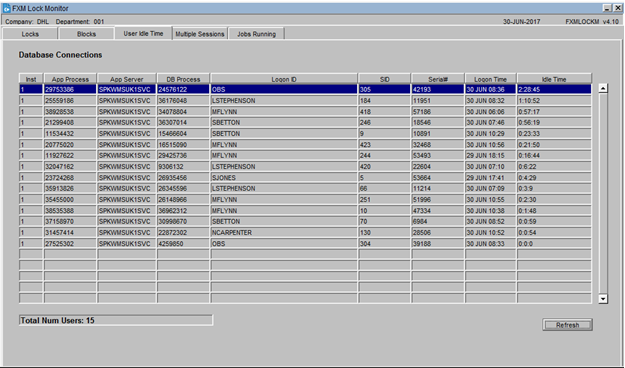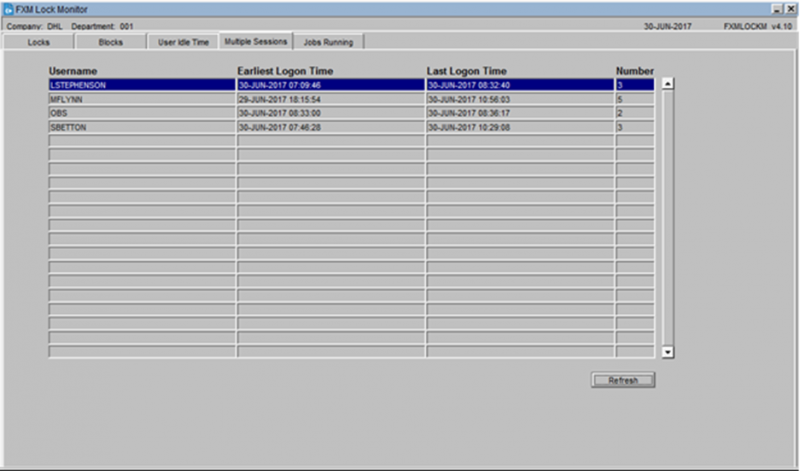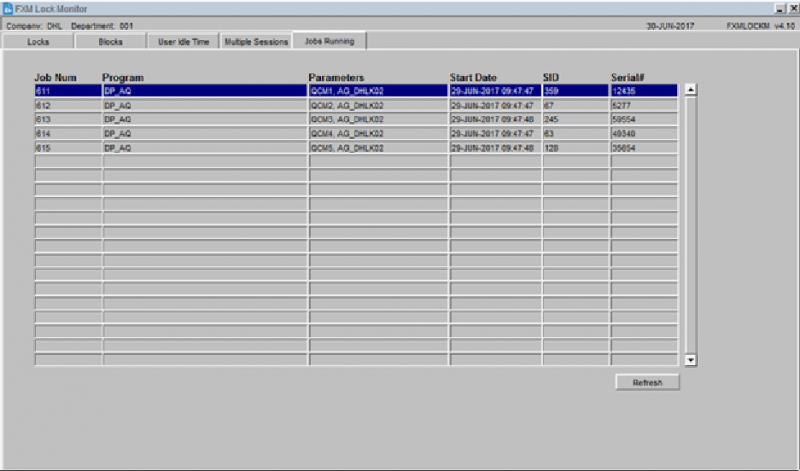FXMLOCKM
![]() Note: All info is shown at database level, so if there is more than one contract using the database then their info will be visible to anyone going into this screen.
Note: All info is shown at database level, so if there is more than one contract using the database then their info will be visible to anyone going into this screen.
First Tab Page – Record Locks
Shows any user or process (e.g. EDI or WCS) holding a record lock. The screen also shows how long they’ve been holding the lock, and which owners & warehouses they have access to.
If the screen shows ‘UNKNOWN’ for the transaction start time – this means Oracle is unable to provide it, however this is usually correct.
The third line shows that user JYR has been locking records PACK_HEADER & PACK_LEVEL) for approx 10 minutes (screen shots taken at 15:53pm).
The columns for SID, Inst & SERIAL# are for support purposes – they are not relevent to the operation.
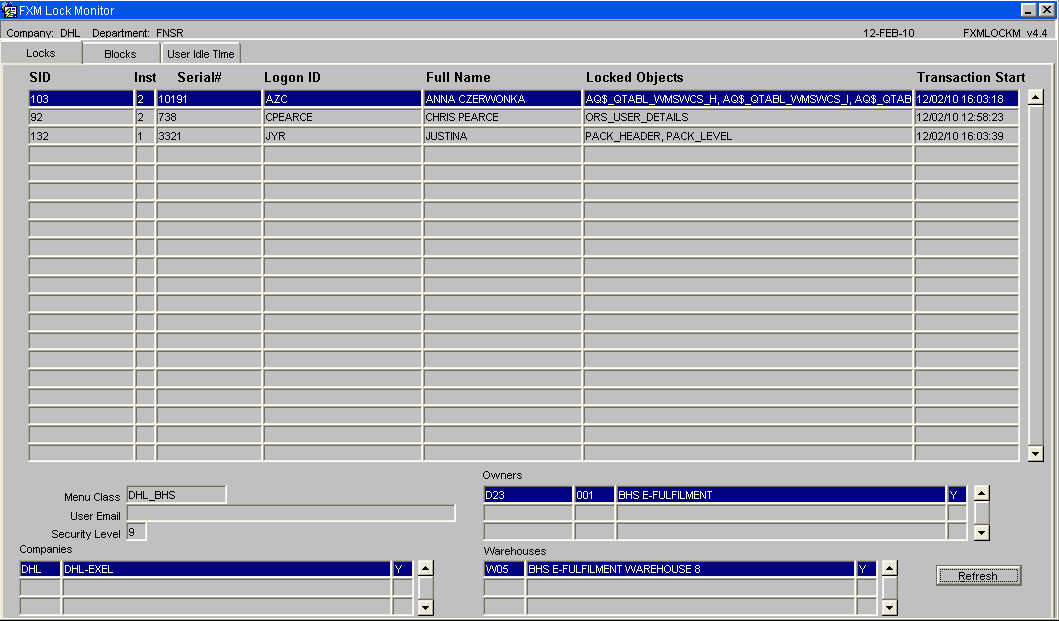
Second tab page – Blocking Locks
This is when one user is holding a lock on a record that another user also wants to update.
The user id of the person locking the record and the user id of the person being locked out are displayed and the table which is being locked.
The SID and instance are for support purposes.
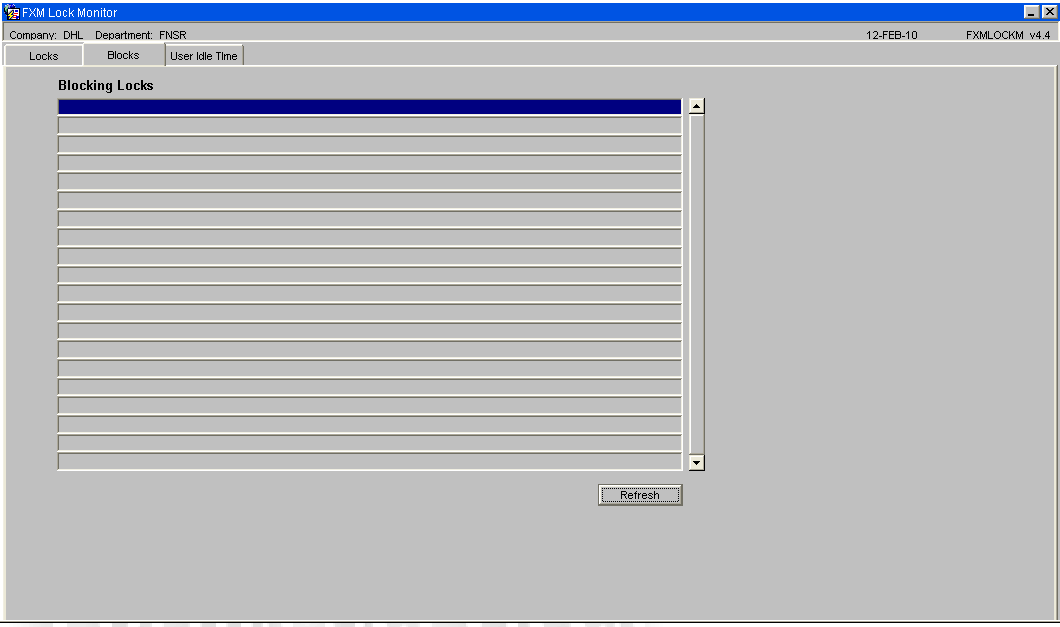
Third tab page – users on system
This lists the users connected to the system. The initial sort order is by Idle Time (i.e. how long since a user issued a command to the database).
All columns on these page can be used as a sort parameter. Clicking on the heading buttons sorts ascending, then with a second click descending.
Useful columns to site are really Logon Time and Idle Time.
Fourth tab page - multiple sessions
The fourth tab page shows if users have multiple sessions logged in under the same username. This isn’t an issue as such, but can be useful to ensure users are logged in with the correct usernames and aren’t locking themselves out with multiple sessions
Fifth tab - Jobs Running
The fifth tab page shows any jobs that are running. There are 2 types of jobs that will be seen – EDI runs and the WMS/WCS interface.
In the screenshot below, just the WMS/WCS interface is running – there are always 5 entries for this interface. EDI type jobs will have 1 entry for each – so 1 for products, 1 for orders – but only show when the EDI is actually executing an upload. The interface to WCS is always running.
